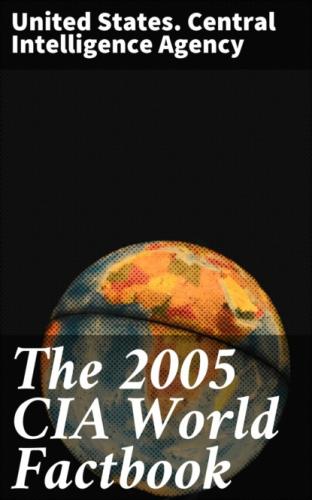Example 1 43.2 43
30.4 30
26.4 26
———
100.0 99
Example 2 42.8 43
31.6 32
25.6 26
———
100.0 101
When this occurs, we do not force the numbers to add exactly to 100, because doing so would introduce additional error into the distribution.
What rounding convention does The World Factbook use?
In deciding on the number of digits to present, the Factbook staff assesses the accuracy of the original data and the needs of US Government officials. All of the economic data are processed by computer—either at the source or by the Factbook staff. The economic data presented in The Factbook, therefore, follow the rounding convention used by virtually all numerical software applications, namely, any digit followed by a "5" is rounded up to the next higher digit, no matter whether the original digit is even or odd. Thus, for example, when rounded to the nearest integer, 2.5 becomes 3, rather than 2, as occurred in some pre-computer rounding systems.
Technical
Does The World Factbook comply with Section 508 of the Rehabilitation
Act regarding accessibility of Web pages?
The World Factbook home page has a link entitled "Text/Low Bandwidth Version." The country data in the text version is fully accessible. We believe The World Factbook is compliant with the Section 508 law in both fact and spirit. If you are experiencing difficulty, please use our comment form to provide us details of the specific problem you are experiencing and the assistive software and/or hardware that you are using so that we can work with our technical support staff to find and implement a solution. We welcome visitors' suggestions to improve accessibility of The World Factbook and the CIA Web site.
I am using the Factbook online and it is not working. What is wrong?
Hundreds of "Factbook" look-alikes exist on the Internet. The Factbook site at: www.cia.gov is the only official site.
When I attempt to download a PDF (Portable Document Format) map file (or some other map) the file has no image. Can you fix this?
Some of the files on The World Factbook Web site are large and could take several minutes to download on a dial-up connection. The screen might be blank during the download process.
When I open a map on The World Factbook site, it is fuzzy or granular, or too big or too small. Why?
Adjusting the resolution setting on your monitor should correct this problem.
Is The World Factbook country data available in machine-readable format? All I can find is HTML, but I'm looking for simple tabular data.
The Factbook Web site now features "Rank Order" pages for selected Factbook entries. "Rank Order" pages are available for those data fields identified with a small bar chart icon located next to the title of the data entry. In addition, all of the "Rank Order" pages can be downloaded as tab-delimited data files that can be opened in other applications such as spreadsheets and databases.
This page was last updated on 27 September, 2005
=====================================================================
@Afghanistan
Introduction Afghanistan
Background:
Afghanistan's recent history is a story of war and civil unrest.
The Soviet Union invaded in 1979, but was forced to withdraw 10
years later by anti-Communist mujahidin forces. The Communist regime
in Kabul collapsed in 1992. Fighting that subsequently erupted among
the various mujahidin factions eventually helped to spawn the
Taliban, a hardline Pakistani-sponsored movement that fought to end
the warlordism and civil war that gripped the country. The Taliban
seized Kabul in 1996 and were able to capture most of the country
outside of Northern Alliance strongholds primarily in the northeast.
Following the 11 September 2001 terrorist attacks, a US, Allied, and
Northern Alliance military action toppled the Taliban for sheltering
Osama BIN LADIN. In late 2001, a conference in Bonn, Germany,
established a process for political reconstruction that ultimately
resulted in the adoption of a new constitution and presidential
election in 2004. On 9 October 2004, Hamid KARZAI became the first
democratically elected president of Afghanistan. The new Afghan
government's next task is to hold National Assembly elections,
tentatively scheduled for April 2005.
Geography Afghanistan
Location:
Southern Asia, north and west of Pakistan, east of Iran
Geographic coordinates:
33 00 N, 65 00 E
Map references:
Asia
Area:
total: 647,500 sq km
land: 647,500 sq km
water: 0 sq km
Area - comparative:
slightly smaller than Texas
Land boundaries:
total: 5,529 km
border countries: China 76 km, Iran 936 km, Pakistan 2,430 km,
Tajikistan 1,206 km, Turkmenistan 744 km, Uzbekistan 137 km
Coastline:
0 km (landlocked)
Maritime claims:
none (landlocked)
Climate:
arid to semiarid; cold winters and hot summers
Terrain:
mostly rugged mountains; plains in north and southwest
Elevation extremes:
lowest point: Amu Darya 258 m
highest point: Nowshak 7,485 m
Natural resources:
natural gas, petroleum, coal, copper, chromite, talc, barites,
sulfur, lead, zinc, iron ore, salt, precious and semiprecious stones
Land use: arable land: 12.13% permanent crops: 0.22% other: 87.65% (2001)
Irrigated land:
23,860 sq km (1998 est.)
Natural hazards:
damaging earthquakes occur in Hindu Kush mountains; flooding;
droughts
Environment - current issues:
limited natural fresh water resources; inadequate supplies of
potable water; soil degradation; overgrazing; deforestation (much of
the remaining forests are being cut down for fuel and building
materials); desertification; air and water pollution
Environment - international agreements:
party to: Biodiversity, Climate Change, Desertification, Endangered
Species, Environmental Modification, Marine Dumping
signed, but not ratified: Hazardous Wastes, Law of the Sea, Marine
